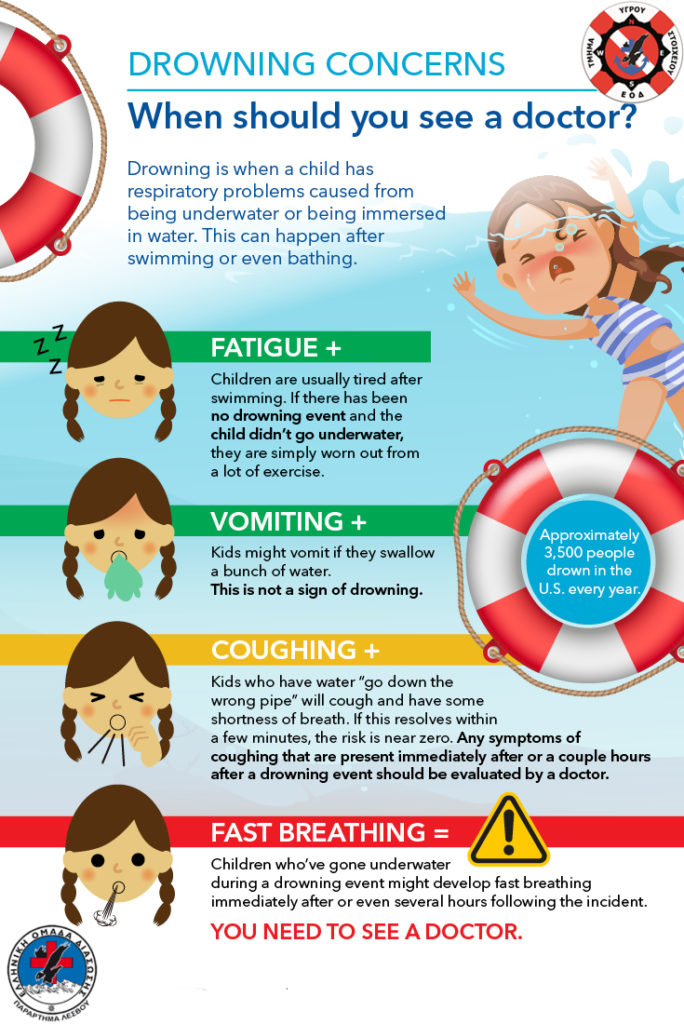Drowning is defined as respiratory impairment as a result of being in or under a liquid. Drowning typically occurs silently, with only a few people able to wave their hands or call for help. Symptoms following rescue may include breathing problems, vomiting, confusion, or unconsciousness. Occasionally symptoms may not appear until up to six hours afterwards. Drowning may be complicated by low body temperature, aspiration of vomit, or acute respiratory distress syndrome.
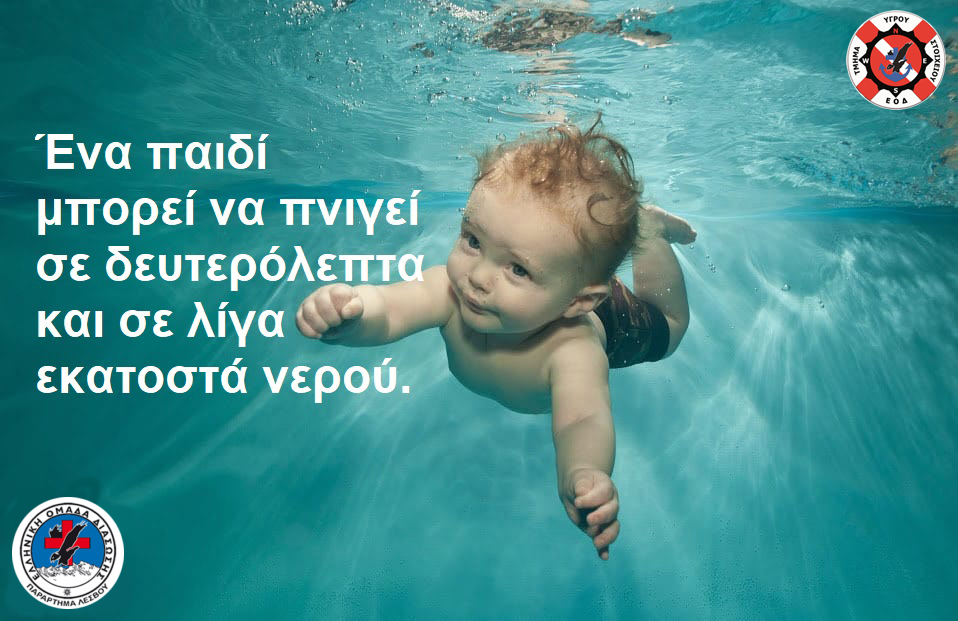
A child can drown in seconds in as little as an inch of water
Drowning is more common when the weather is warm and among those with frequent access to water. Risk factors include alcohol use, epilepsy, and low socioeconomic status. Common locations of drowning include swimming pools, bathtubs, natural bodies of water, and buckets. Initially the person holds their breath, which is followed by laryngospasm, and then low oxygen levels. Significant amounts of water typically only enter the lungs later in the process. It may be classified into three types: drowning with death, drowning with ongoing health problems, and drowning with no ongoing health problems.
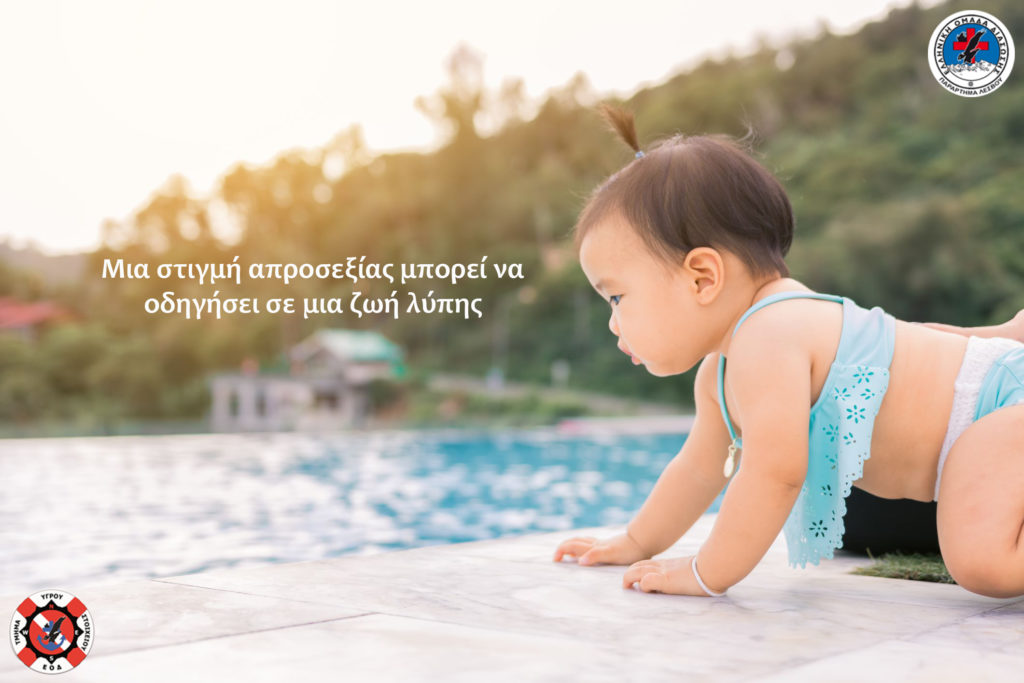
Efforts to prevent drowning include teaching children to swim, safe boating practices, and limiting or removing access to water such as by fencing pools. Treatment of those whose who are not breathing should begin with opening the airway and providing five breaths. In those whose heart is not beating and who have been underwater for less than an hour CPR is recommended. Survival rates are better among those with a shorter time under the water. Among children who survive poor outcomes occur in about 7.5% of cases.
Everything a parent needs to know about secondary and dry drowning!
Both can happen outside the water
Both dry as well as the secondary drowning, are considered as informal types of drowning as they happen after a child has come out of the water. On dry drowning, the water that a child can swallow does not enter the lungs. The larynx closes as a defense, does not allow the water to enter, but at the same time no air enters. The difficulty in breathing can even cause suffocation.
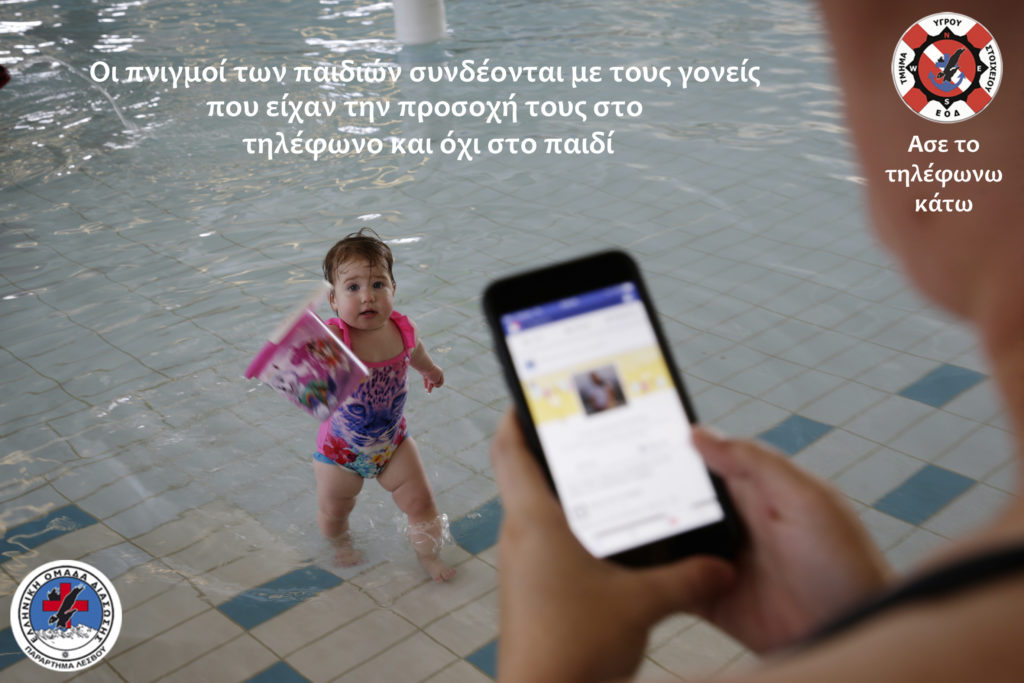
The secondary drowning, on the other hand, occurs when the water enters the lungs. The water is drawn into the lungs and concentrated there, making it difficult to breathe. This difficulty in breathing can lead to potentially life-threatening problems. It is important to supervise your child for several hours afterwards.

Dry drowning, usually occurs within minutes after a child ‘fights’ in the water. When secondary drowning occurs, a child may not experience symptoms of discomfort for hours or, in rare cases, not show symptoms even for a 24-hour period . “Watch your child for the next 24 hours and look for symptoms such as breathlessness, breathing differences, such as heavy or shallow breathing, abnormal skin color, and shivering , and because an innocent dip may not seem dramatic and do not understand any parent that his child is in danger, it is good to pay close attention to how their child responds afterwards”.
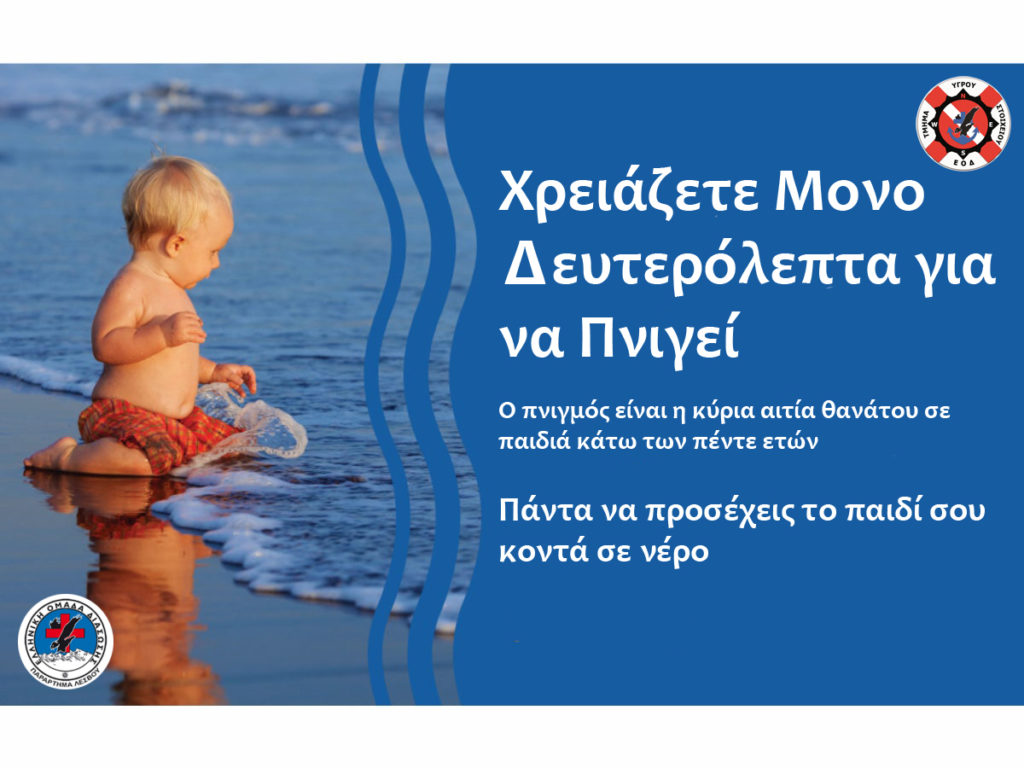
Be careful when you notice cough and unnecessary fatigue “More importantly, parents watch their child’s activity if they have a breathing problem and if they cough, an indicates the child suddenly tired and sleepy, with no reason, that even looks unnatural and then help parents should seek a medical practitioner or a casualty! “.
Warning signs that your child may be at risk of secondary or dry drowning.
- Shortness of breath
- Drowsiness
- Differences in breathing
- Abnormal skin color
- Shudder
- Irritation or pain in the neck or chest
- Cough after a deep breath
- Persistent cough or wheezing
- Breathing difficulty
- Unusual fatigue
- Dizziness
- Disturbed level of consciousness
- High fever
Drowning prevention measures:
- Encourage your children to learn swimming from the age of 4 years old.
- Do not leave them alone in the water even if they know how to swim. Always swim with them.
- Be always close to your children
- Young children should use appropriate flotation devices (Bratt sacks inflatables, coils), but never as a substitute for your own inspection.
- Do not let them dive if they do not know the technique and the water is not deep enough.
- Do not let your children get into the water unless they spend at least 3 hours of a meal.
- Do not let them swim in deep waters. Explain that they can swim equally well when the water is just above their waist.
- Do not enter the sea if there are large waves or currents.
- You prefer to swim on beaches where there is a lifeguard.
- Keep your phone near you with emergency numbers (hospital, police, etc. ).
